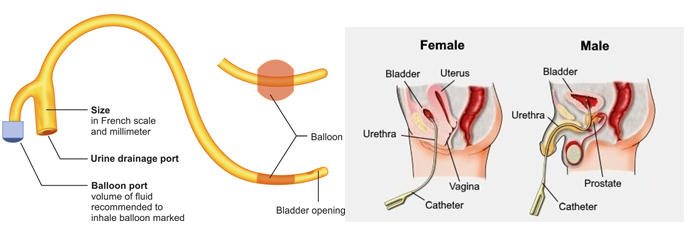One of the intraoperative activities that are performed by the perioperative nurse and are specific to the circulating function is:
admitting, identifying, and assessing the patient.
counting sponges, needles, and surgical instruments.
passing instruments to the surgeon and assistants.
preparing the instrument table and sterile equipment.
The Correct Answer is B
Counting sponges, needles, and surgical instruments is an intraoperative activity that is specific to the circulating function of the perioperative nurse. The nurse is responsible for maintaining an accurate count of all surgical items to prevent leaving any foreign objects inside the patient after the surgery. This is a crucial task to ensure patient safety and prevent any potential complications that may arise from such errors.
Option a. admitting, identifying, and assessing the patient, is a preoperative function that is usually performed by the preoperative nurse.
Option c. passing instruments to the surgeon and assistants, is a scrub nurse function that requires knowledge of the surgical procedure and a sterile technique.
Option d. preparing the instrument table and sterile equipment is also a scrub nurse function that requires expertise in sterile technique, knowledge of surgical procedures, and the ability to maintain a sterile environment.

Nursing Test Bank
Naxlex Comprehensive Predictor Exams
Related Questions
Correct Answer is D
Explanation
Cushing syndrome is a hormonal disorder caused by prolonged exposure to high levels of cortisol hormone in the body. It can cause a variety of physical manifestations, including truncal obesity, thin arms, and legs, decreased axillary and pubic hair, hypertension, glucose intolerance, osteoporosis, and purple striae (stretch marks) on the abdomen.
Out of the options given, the nurse would expect to find purplish-red streaks on the abdomen as an additional manifestation of Cushing syndrome.


Correct Answer is C
Explanation
The nurse should act on the order to insert a 16 French retention catheter first. The patient's markedly distended bladder and agitated and confused state suggest acute urinary retention, which can be relieved by inserting a catheter to drain the urine. This is a priority intervention as urinary retention can lead to serious complications such as bladder rupture, hydronephrosis, and renal failure. Once the catheter is inserted and the patient's bladder is drained, the healthcare provider can order further tests such as an IVP or blood tests to assess renal function. The order for lorazepam can be addressed after the catheter is inserted and the patient's urinary retention is addressed.
Whether you are a student looking to ace your exams or a practicing nurse seeking to enhance your expertise , our nursing education contents will empower you with the confidence and competence to make a difference in the lives of patients and become a respected leader in the healthcare field.
Visit Naxlex, invest in your future and unlock endless possibilities with our unparalleled nursing education contents today
Report Wrong Answer on the Current Question
Do you disagree with the answer? If yes, what is your expected answer? Explain.
Kindly be descriptive with the issue you are facing.

